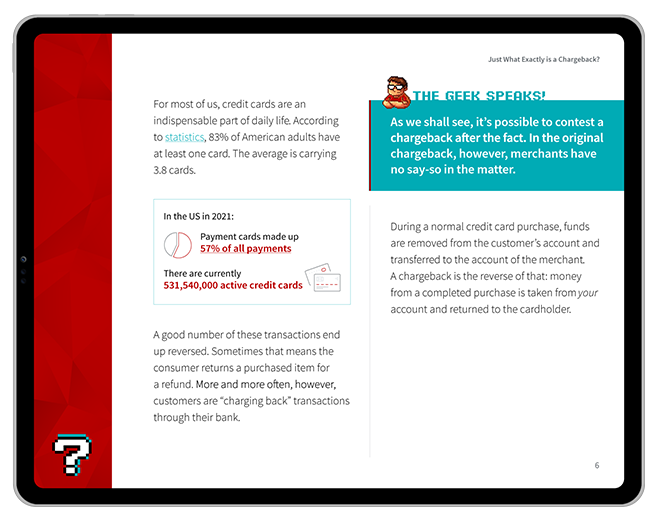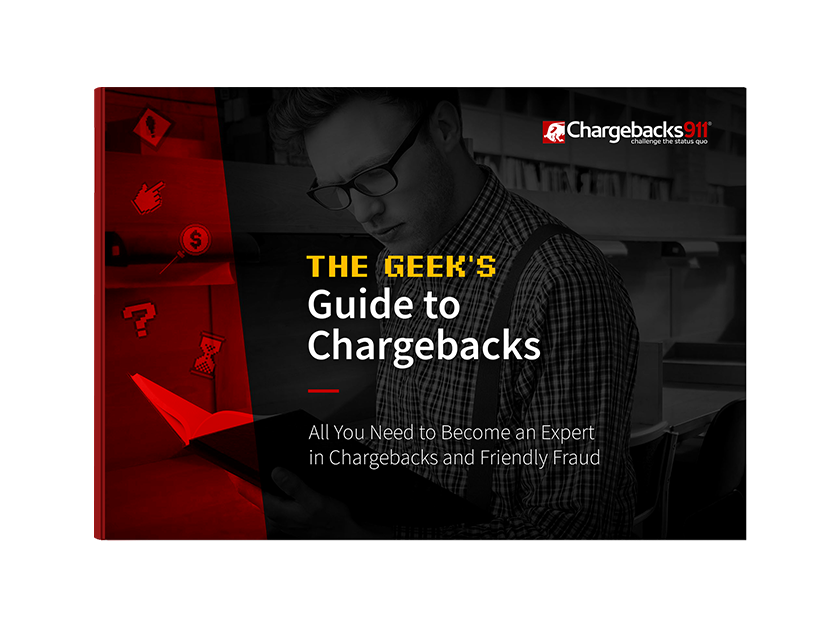Understanding Chargeback Fees: How to Reduce Your Costs
Every time you get hit with a chargeback, it translates to money disappearing from your pocket. You lose the revenue from the original sale, as well as the cost of any merchandise already shipped. However, there are also chargeback fees to consider.
Chargeback fees seem like a minor annoyance at first. They can rack up quickly, though, potentially outstripping the cost of the initial sale several times over.
What do you need to know about chargeback fees? What can you do to (hopefully) avoid them altogether? Let’s find out.
Recommended reading
- Explaining Section 75 of the Consumer Credit Act
- American Express Chargeback Time Limits: The 2024 Guide
- Chargeback Time Limits: the Merchant's Guide for 2024
- What is the Restore Online Shoppers' Confidence Act?
- Discover Chargeback Time Limits: The 2024 Guide
- Chargeback Legal Process: Is There a Step After Arbitration?
What is a Chargeback Fee?
- Chargeback Fee
A chargeback fee is a variable amount charged by a bank for each dispute. The fee is paid by the merchant and helps cover the bank’s costs involved in settling a chargeback.
[noun]/charj • bak • fē/Chargebacks can be the result of criminal fraud or may be caused by a merchant error. The customer has the legal right to request a chargeback under these circumstances.
Let’s say a cardholder discovers a charge on their monthly credit card statement. They contact the issuing bank, which initiates a chargeback. The bank typically refunds the cardholder's money out of their own funds, then debits your acquirer to recover the money. Finally, the acquirer pulls funds from your account to recoup their losses.
There is overhead that accrues at each step in the chargeback process. To offset these costs, the acquiring bank charges the merchant a chargeback administration fee. In most cases, the fee applies even if the chargeback is eventually reversed.
Why Do Merchants Get Chargeback Fees?
In short: chargeback fees exist because managing the chargeback process costs time and money.
As outlined above, each chargeback filed costs the bank time and resources. Issuers and acquirers both have to pay processing costs, while acquirers must also pay chargeback fees to the card network.
Employees at the banks, card network, and other payment service providers are busy making it all happen. They’re tasked with securely moving funds from account to account and handling all the necessary communication and recordkeeping. These activities all incur costs. And, because the merchant is deemed “at fault” for the chargebacks, these costs are passed off to the merchant in the form of chargeback fees.
Charging fees also serve a secondary punitive purpose. The prospect of getting hit with a fee is meant to retrain merchant behavior to avoid future mistakes that might lead to more chargebacks. The fee gives merchants a significant incentive to try to identify and fix the problems that are causing chargebacks to occur in the first place.
How Much is a Chargeback Fee?
There’s not a single answer here. Chargeback fees are assessed by acquirers and processors, so they can vary. That said, fees normally range between $20 and $100 per claim. They can go much higher, though, especially if your business is considered “high risk.”
Exact amounts depend on the acquirer, which bases its calculations on a range of factors. This can include your chargeback history, the products or services involved in the transaction, the industry and vertical, etc.
The price tag is not necessarily the same for each chargeback, either. Banks have leeway to impose higher fees at their discretion. So, a merchant with one dispute may be charged a certain rate, but a merchant with 100 chargebacks per month may pay a higher per-chargeback fee.
To illustrate this point, here are a few of the most prominent brands in the payment processing space, along with the nominal chargeback fee they assess (if any):
Chargeback fees are just the tip of the iceberg. Sink them before they sink you.
Each payment entity may have its own fee structure and policies governing chargebacks, making it essential for merchants to understand the terms of their agreements. These fees can range from a fixed amount to a percentage of the transaction value. They may even include additional penalties for merchants with high chargeback rates.
Chargeback fees resulting from dispute arbitration will be significantly higher than typical chargeback fees.
Let’s say a lengthy dispute reaches the arbitration stage, meaning representatives from the card network (Visa, Mastercard, etc.) have to get involved. Bringing in the card network means incurring fees that average about $500 per dispute. But, it’s also important to note that arbitration fees are levied against the party which lost the dispute, instead of falling entirely on the merchant. If a cardholder’s claim loses in arbitration, the issuer may be on the hook for that fee.
“High-Risk” Chargeback Fees
Credit card networks have a lot of influence regarding fees for elevated chargeback risk. They set certain limits for a business’ chargeback ratio and the total number of chargebacks received. If the merchant exceeds those limits, they may end up in a chargeback monitoring program.
This is extremely bad news. Banks and processors assess fees on a per-chargeback basis. However, monitoring programs like the Visa Dispute Monitoring Plan (VDMP) also assess program fees that can cost thousands of dollars each month.
These costs are usually set up in tiers based on the merchant’s situation. For example, merchants with more than 100 monthly transactions and a Visa chargeback ratio of 0.9% or higher are subject to the VDMP. The fee structure looks like this:
Number of Months spent in VDMP
1-4 Months
No additional fees5-9 Months
$50 per chargeback10-12 Months
$50 per chargeback, plus an additional $25,000 monthly review feePrices increase for merchants labeled high-risk by Visa or those with over 1,000 chargebacks per month and a 1.8% chargeback ratio:
1-6 Months
$50 per chargeback7-12 Months
$50 per chargeback, plus an additional $25,000 monthly review feeThe Mastercard Excessive Chargeback Merchant program, or ECM, is very similar. The longer the merchant remains in a monitoring program without substantial improvement, the more likely the card network will simply revoke card processing privileges altogether.
Learn more about Mastercard ECM feesIt’s important to note that the thresholds imposed by the card network are a baseline. Your processor or acquirer may not be so forgiving. They may close your account as a risk-aversion measure before the card network ever gets involved.
Other Chargeback Costs
So far, we’ve been talking about direct costs that merchants must pay. However, we want to underscore that the cost of a chargeback goes far beyond the nominal fee.
Each transaction involves a range of expenses: cost of goods shipped, order fulfillment, shipping and handling, taxes, processor, and gateway fees. You also can’t forget the time and labor invested in making all this happen. In the event of a chargeback, though, all that money goes down the drain. In many cases, the cardholder won’t even return the merchandise.
You have the right to fight invalid disputes, but that involves even more costs. And, even if you win, you will only get back a portion of your investment. Studies show that merchants will ultimately lose an additional $2.75 for every dollar lost to a fraud attack. These additional costs come in the form of lost merchandise and overhead costs like shipping and logistics. Plus, there are long-term costs like bad dispute data, which can lead to false positives and other errors in fraud detection.
The cost of these ancillary losses trends upward year-over-year. That’s why it’s important to get serious about chargeback fees and other costs, and do what you can now to prevent them.
10 Tips to Reduce Chargeback Fees
Some merchants focus on how to mitigate chargeback fees after they've occurred. However, the most effective strategy is to prevent them from happening in the first place.
The saying "an ounce of prevention is worth a pound of cure" is particularly key here. Investing in proactive measures to avert chargebacks is ultimately more cost-effective than trying to resolve them after the fact.
On that note, here are ten best practices for merchants to prevent disputes and avoid the painful fees that accompany them:
#1 | Clearly Describe Products & Services
Details Matter: Make sure your product descriptions are as detailed and accurate as possible. Include dimensions, color, functionality, and other attributes so that the customer knows exactly what they're buying.
Quality Images: Use high-resolution images to showcase the product from multiple angles.
#2 | Transparent Pricing & Billing Policies
Detailed Invoice: Clearly outline all costs involved in a transaction, including taxes, shipping, and other fees.
Consent for Recurring Charges: For subscription-based services, make sure to get explicit consent from the customer and make it easy for them to cancel at any time.
#3 | Use Fraud Detection Tools
Address Verification: Use AVS to confirm that the address provided by the customer matches the address on file with their credit card company.
CVV: Request the three or four-digit security code (CVV) to add an extra layer of verification.
#4 | Provide Excellent Customer Service
24/7 Support: Offer multiple avenues for customer support, including phone, email, and chat, and make service available round the clock.
Quick Response: Respond to customer inquiries and complaints as quickly as possible to prevent them from resorting to chargebacks.
#5 | Fast & Reliable Shipping
Tracking Numbers: Always provide a tracking number as soon as the item is shipped.
Packaging: Ensure items are well-packaged so they arrive undamaged.
#6 | Make Returns Easy
Clear Policy: Clearly outline your return and refund policies on your website. Include them in your order confirmation emails as well.
Free Returns: Consider offering free returns to encourage customers to go through your process instead of initiating a chargeback.
#7 | Keep Detailed Records
Transaction Records: Keep logs of all interactions, transactions, authorizations, and other relevant documentation.
Proof of Delivery: Always have proof of delivery available to dispute any claims that an item was not received.
#8 | Act Quickly
Use Chargeback Alerts: Chargeback alerts notify you of pending disputes, letting you resolve issues directly with the customer before they become chargebacks.
Communication: Keep lines of communication with your payment processor open. Promptly respond to alerts and requests for information.
#9 | Optimize Your Statement Descriptor
Recognizable Name: Ensure that the name that appears on customers' credit card statements is easily recognizable and relatable to your business.
Contact Information: Include a phone number or website URL next to the charge in case customers have questions.
#10 | Educate Your Staff
Training: Make sure your staff is well-trained in how to use your payment processing systems securely and efficiently.
Fraud Awareness: Educate them about the common signs of fraudulent activity so they can identify and prevent potential chargebacks.
Stop Losing to Chargeback Fees
The tactics outlined above are a step in the right direction. Successful chargeback prevention can be a complicated, time-consuming, and resource-intensive endeavor, though. Engaging the right chargeback management team is a bargain compared to the heavy costs incurred by chargebacks.
The experts at Chargebacks911® will create a customized solution tailored to your business. We can take chargebacks completely off your plate AND boost your return on investement, all backed by the only performance-based ROI guarantee in the industry.
Remember: a proactive approach to customer satisfaction and operational excellence isn't just good business. It's your best defense against the costly problem of chargebacks. Invest in prevention now to save yourself time, money, and frustration in the future.
FAQs
What is a chargeback fee?
A chargeback fee is a variable amount charged by a bank for each dispute. The fee is paid by the merchant and helps cover the bank’s costs involved in settling a chargeback.
Do I have to pay chargeback fees?
If you’re a merchant and have received a chargeback, yes. All chargebacks will generally incur a chargeback fee.
Why did I get a chargeback fee?
Merchants pay chargeback fees to cover the administrative and processing costs incurred by their payment providers when handling a customer's disputed charge. These fees also serve as a deterrent, encouraging merchants to take measures to prevent fraudulent or disputed transactions.
Why do banks charge a chargeback fee?
Banks charge fees to cover the administrative and processing costs incurred by their payment providers when handling a customer's disputed charge. These fees also serve as a deterrent, encouraging merchants to take measures to prevent fraudulent or disputed transactions.
How do I avoid chargeback fees?
To avoid chargeback fees, merchants should focus on preventing chargebacks altogether by implementing robust verification processes, providing transparent and accurate product descriptions, and offering excellent customer service to resolve issues before they escalate.
Who pays the chargeback fee?
Merchants pay chargeback fees. There are some exceptions; if a dispute requires arbitration, the party found liable will have to pay the arbitration costs. However, merchants are generally responsible for chargeback fees.














